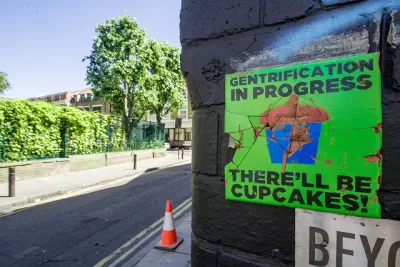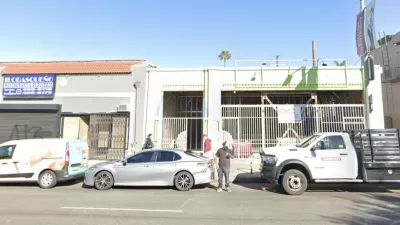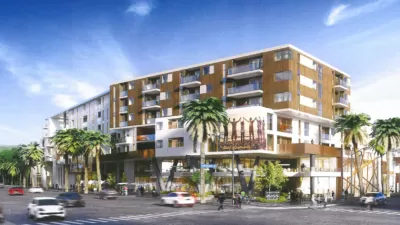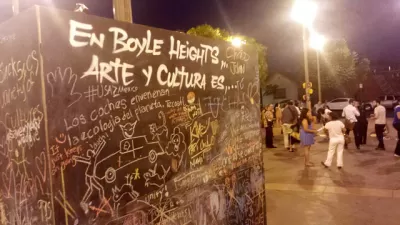In the wake of a very pro-development March election, Los Angeles seems ready to embrace change. But not everywhere. In low-income Boyle Heights, residents have been more militant than most against encroaching gentrification.

In the Los Angeles elections this week, the defeat of anti-development Measure S, along with the reelection of Mayor Eric Garcetti, point to an urban-friendly future. But older, affluent white homeowners aren't the only ones protesting development.
In Boyle Heights, one point of contention involves that sure sign of gentrifier infiltration: the art gallery. Natalie Delgadillo writes, "[Local activist Angel] Luna's group, together with organizations like Defend Boyle Heights and Serve the People LA, have accused the galleries of paving the way for new development and speculation that will eventually end up displacing residents."
"[Protestors] have been militant, insistent, and extraordinarily confrontational," even forcing some nonprofit art spaces to close. Delgadillo points to protestors' success, in that Boyle Heights "remains a firmly Latino, working-class neighborhood, managing to preserve its identity even as surrounding neighborhoods like Echo Park and Highland Park rapidly gentrify."
Density and housing might be just what LA needs, but insensitivity to working-class residents probably isn't the right path.
FULL STORY: The Neighborhood That Went to War Against Gentrifiers

Maui's Vacation Rental Debate Turns Ugly
Verbal attacks, misinformation campaigns and fistfights plague a high-stakes debate to convert thousands of vacation rentals into long-term housing.

Planetizen Federal Action Tracker
A weekly monitor of how Trump’s orders and actions are impacting planners and planning in America.

Chicago’s Ghost Rails
Just beneath the surface of the modern city lie the remnants of its expansive early 20th-century streetcar system.

Bend, Oregon Zoning Reforms Prioritize Small-Scale Housing
The city altered its zoning code to allow multi-family housing and eliminated parking mandates citywide.

Amtrak Cutting Jobs, Funding to High-Speed Rail
The agency plans to cut 10 percent of its workforce and has confirmed it will not fund new high-speed rail projects.

LA Denies Basic Services to Unhoused Residents
The city has repeatedly failed to respond to requests for trash pickup at encampment sites, and eliminated a program that provided mobile showers and toilets.
Urban Design for Planners 1: Software Tools
This six-course series explores essential urban design concepts using open source software and equips planners with the tools they need to participate fully in the urban design process.
Planning for Universal Design
Learn the tools for implementing Universal Design in planning regulations.
planning NEXT
Appalachian Highlands Housing Partners
Mpact (founded as Rail~Volution)
City of Camden Redevelopment Agency
City of Astoria
City of Portland
City of Laramie





























